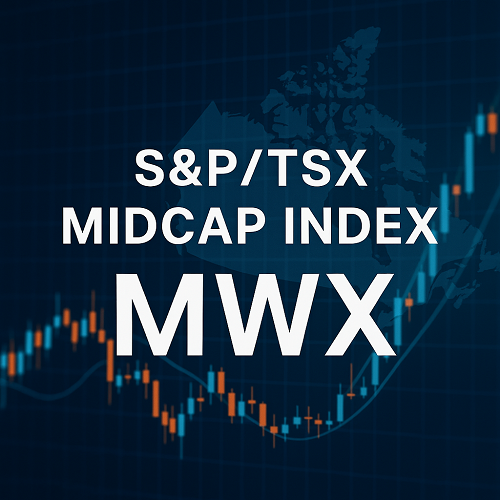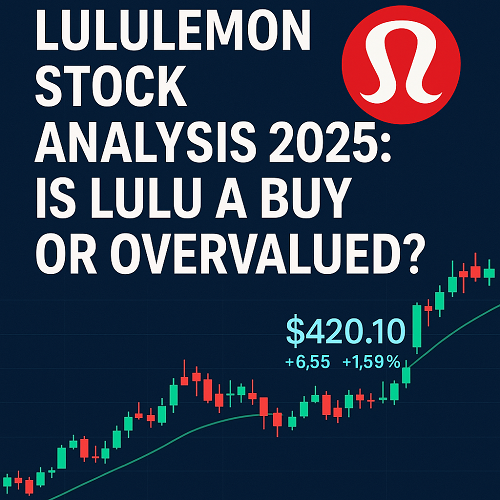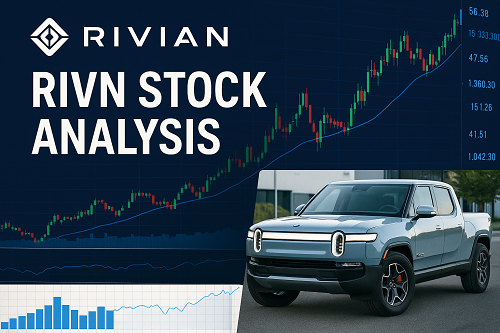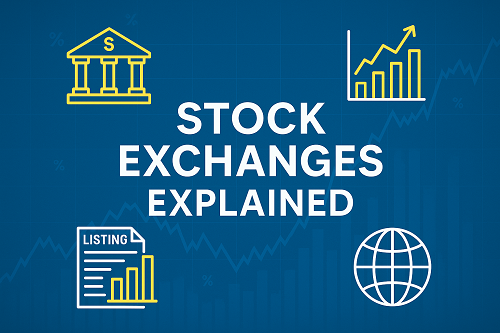Understanding the MWX Index
The S&P/TSX MidCap Index (symbol: ^MWX) is one of Canada’s most important equity benchmarks, representing the mid-sized segment of publicly traded companies on the Toronto Stock Exchange (TSX). News about its performance can often be found on major financial platforms like CBS MarketWatch, making cbs marketwatch a key source for investors.
While the spotlight often falls on large-cap giants within the S&P/TSX Composite Index or small speculative stocks on the TSX Venture Exchange, the MWX captures the middle ground — companies that have moved beyond early-stage growth but have yet to reach the scale of Canada’s largest corporations.
This group of companies is critical to Canada’s economic health, innovation, and market diversification. The MWX Index provides investors with a lens into the performance, volatility, and opportunity within Canada’s mid-tier market segment.
What Is the S&P/TSX MidCap Index (MWX)?
The S&P/TSX MidCap Index is a subset of the S&P/TSX Composite Index, designed to measure the performance of mid-capitalization Canadian equities.
It is maintained by S&P Dow Jones Indices in partnership with the Toronto Stock Exchange (TSX). Constituents of the MWX are selected based on their market capitalization and liquidity, ensuring the index accurately reflects medium-sized public companies across Canada.
Index Objective
The primary objective of the MWX is to:
- Track medium-sized companies that demonstrate sustainable growth and market presence.
- Offer investors a diversified exposure to the mid-cap segment of the Canadian economy.
- Serve as a benchmark for fund managers and investors targeting mid-cap equities.
The Role of Mid-Cap Companies in Canada’s Market
Mid-cap companies represent the “sweet spot” of investing — often large enough to offer stability and liquidity, yet small enough to sustain strong growth potential.
In the Canadian context, mid-cap firms frequently operate in energy, materials, industrials, financials, and technology, reflecting the nation’s diversified economic structure.
Why Mid-Caps Matter
- Growth Potential: Many mid-cap companies are still expanding domestically and internationally.
- Balance of Risk and Return: They offer less volatility than small caps and more growth upside than large caps.
- Innovation Drivers: These firms often pioneer technological and operational advancements in their industries.
MWX Index Composition and Methodology
The S&P/TSX MidCap Index uses a float-adjusted market capitalization weighting methodology, meaning that only the shares available to public investors are considered.
Selection Criteria
To qualify for inclusion:
- A company must be listed on the Toronto Stock Exchange (TSX).
- It must fall within the mid-cap range as defined by S&P’s annual rebalancing.
- The company must meet minimum liquidity thresholds, ensuring it trades actively enough to support investment and index tracking.
Rebalancing
The index is reviewed quarterly to ensure it continues to represent the Canadian mid-cap sector accurately. Constituents are added or removed based on changes in company valuations and liquidity.
How MWX Differs from Other TSX Indexes
| Index | Focus | Number of Constituents | Market Cap Range | Description |
|---|---|---|---|---|
| S&P/TSX 60 (TX60) | Large-Cap | 60 | Largest TSX-listed firms | Blue-chip leaders of the Canadian economy |
| S&P/TSX Composite (TSX) | Broad Market | ~230 | All cap ranges | Benchmark for Canadian equity performance |
| S&P/TSX Venture (CDNX) | Small-Cap | 1500+ | Early-stage firms | High-growth, speculative Canadian companies |
| S&P/TSX MidCap (MWX) | Mid-Cap | ~60–80 | Medium-sized | Stable, growing firms between large and small caps |
Historical Performance of the MWX Index
Historically, the MWX Index has exhibited moderate volatility compared to small-cap indices, while often outperforming large-cap indices during periods of economic recovery.
From 2015 to 2024, MWX delivered a compound annual growth rate (CAGR) roughly between 6% and 8%, depending on sector exposure — outperforming many small-cap indices but lagging behind certain large-cap-driven rallies led by energy and banking sectors.
Performance Highlights
- Post-2020 Recovery: Mid-cap industrials and technology companies were key contributors to MWX’s rebound after pandemic-driven downturns.
- Commodity Influence: Energy and mining mid-caps remain significant drivers due to Canada’s resource-based economy.
- Volatility Profile: Less volatile than small caps, but more responsive to GDP growth and policy changes than the large-cap TSX 60.
Sectors That Drive the MWX
As of recent years, MWX is typically diversified across key Canadian industries:
| Sector | Approximate Weight | Examples of MidCap Companies |
|---|---|---|
| Energy | 25–30% | ARC Resources, Vermilion Energy |
| Materials | 20–25% | Lundin Mining, First Quantum Minerals |
| Industrials | 15–20% | CAE Inc., Finning International |
| Financials | 10–15% | EQB Inc., Intact Financial (formerly mid-cap) |
| Information Technology | 10% | OpenText, CGI (historically mid-cap) |
| Consumer & Utilities | 5–10% | Metro Inc., Fortis (historically mid-cap) |
How to Invest in or Track the MWX Index
1. Exchange-Traded Funds (ETFs)
The most accessible way to gain exposure to the MWX is through Canadian mid-cap ETFs, such as:
- iShares S&P/TSX Completion Index ETF (XMD)
- BMO S&P/TSX MidCap Index ETF (ZMD)
These funds closely replicate the MWX’s performance, offering diversified exposure at a relatively low cost.
2. Mutual Funds
Many Canadian mutual funds benchmark against the MWX, providing professionally managed portfolios with similar exposure.
3. Direct Stock Selection
Investors can also pick individual mid-cap stocks within the MWX that show strong fundamentals or growth catalysts.
Economic Factors Influencing MWX Performance
The MWX Index’s performance is tied to several macroeconomic and policy variables:
- Interest Rates: Rising rates often reduce valuations for mid-cap growth stocks.
- Commodity Prices: Energy and materials sectors heavily influence returns.
- Exchange Rates: A weaker Canadian dollar can boost export-heavy mid-caps.
- Global Trade Trends: Mid-cap industrials benefit from increased international trade.
- Government Spending: Infrastructure investments can significantly boost industrial and resource-based firms.
Benefits and Risks of Investing in Mid-Cap Stocks
Advantages
- Higher growth potential than large caps.
- Lower volatility than small caps.
- More diversified revenue sources.
- Stronger management and balance sheets.
Risks
- Less liquidity than large caps.
- Greater sensitivity to market downturns.
- Sector concentration risk (especially in resources).
- Exposure to currency fluctuations for exporters.
Trading the MWX: ETFs, Derivatives, and Index Funds
Sophisticated investors and traders can use MWX derivatives to speculate or hedge exposure:
- Index Futures and Options: Offered on the Montréal Exchange (MX).
- Leveraged ETFs: Allow traders to amplify returns (and risks).
- Inverse ETFs: Designed for short-term bearish positions on the mid-cap segment.
MWX Index vs. Global MidCap Benchmarks
| Index | Country | 5-Year CAGR | Key Characteristics |
|---|---|---|---|
| S&P/TSX MidCap (MWX) | Canada | ~6–8% | Resource-heavy, dividend-oriented |
| S&P 400 MidCap | USA | ~9–10% | Diverse sectors, strong tech component |
| FTSE 250 | UK | ~7% | Financial and consumer-driven |
| Nikkei Mid 400 | Japan | ~5% | Export-oriented manufacturing focus |
This comparison highlights that the MWX offers unique exposure to Canada’s commodity and resource strength, which can act as a hedge against inflation and global supply shocks.
Recent Trends and 2025 Outlook
As of 2025, the MWX has shown resilient performance, supported by:
- Rebounding energy prices,
- Manufacturing expansion in Ontario and Quebec, and
- Renewed investor appetite for value and dividend-paying stocks.
However, analysts caution about:
- Continued interest rate uncertainty,
- Global demand softening in materials, and
- High volatility driven by geopolitical and fiscal shifts.
Forecast: If energy and industrials maintain moderate growth, the MWX could see mid-single-digit gains (5–7%) through 2025, outperforming small-cap peers but lagging the TSX 60’s large-cap dividend yielders.
Frequently Asked Questions
1. What does MWX stand for?
MWX is the ticker symbol for the S&P/TSX MidCap Index, representing medium-sized companies listed on the Toronto Stock Exchange.
2. How often is the MWX Index updated?
It is rebalanced quarterly by S&P Dow Jones Indices to reflect market capitalization changes.
3. Can I invest directly in MWX?
No. You cannot buy the index itself, but you can invest in ETFs or mutual funds that track it.
4. Is MWX a good indicator of the Canadian economy?
Yes. Mid-cap companies often mirror domestic business activity more closely than multinational large caps.
Conclusion: Why MWX Matters for Investors
The S&P/TSX MidCap Index (MWX) bridges the gap between Canada’s large and small companies — offering a balanced mix of growth, stability, and diversification.
For investors seeking exposure to Canada’s economic core, MWX provides a valuable benchmark and a practical investment target through ETFs and managed funds.
Whether used as a performance benchmark or an investment strategy component, the MWX stands as a cornerstone of Canadian equity market analysis — and a compelling choice for investors looking to capture the growth potential of mid-sized Canadian enterprises.





 XAUT-USD
XAUT-USD  AMD
AMD  MARA
MARA  SHOP
SHOP  BULL
BULL  CL=F
CL=F